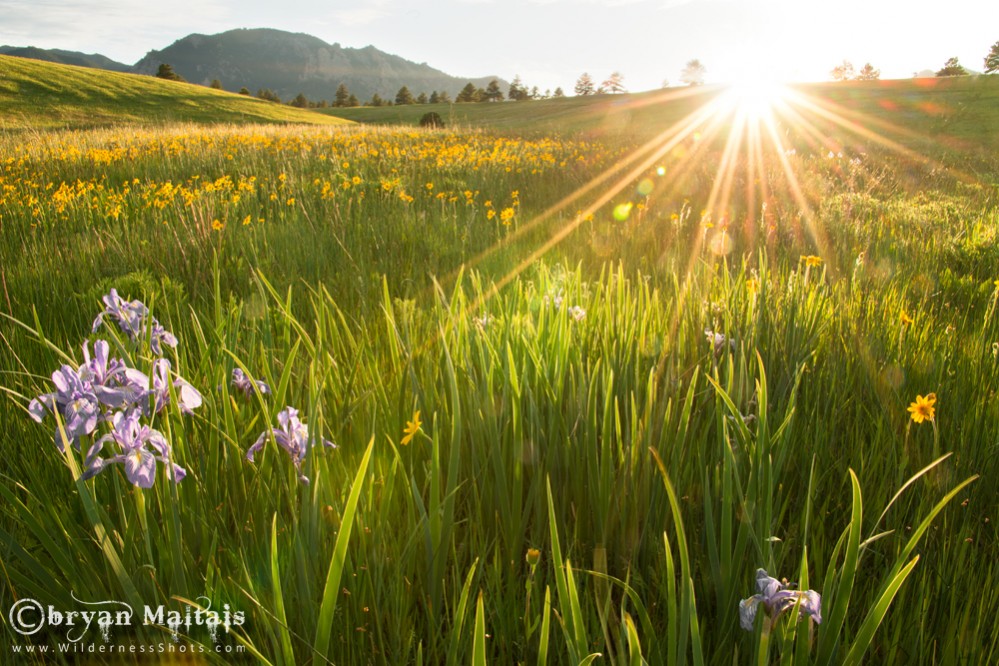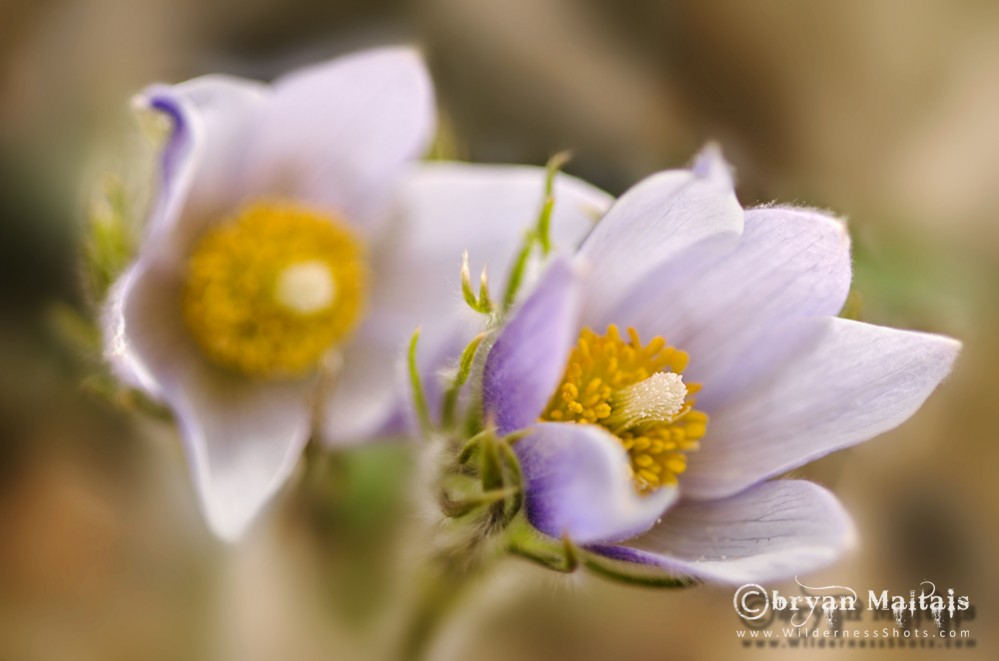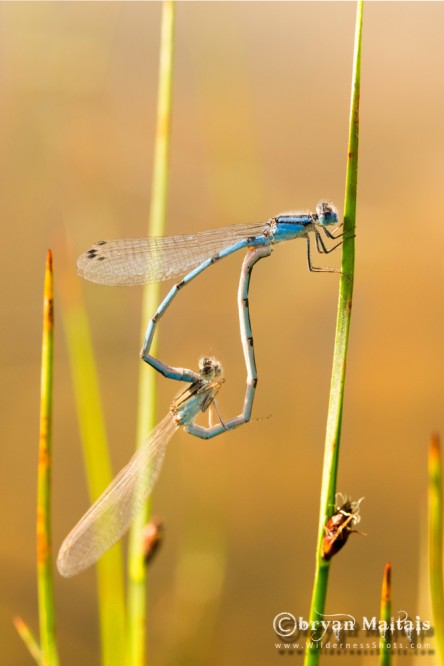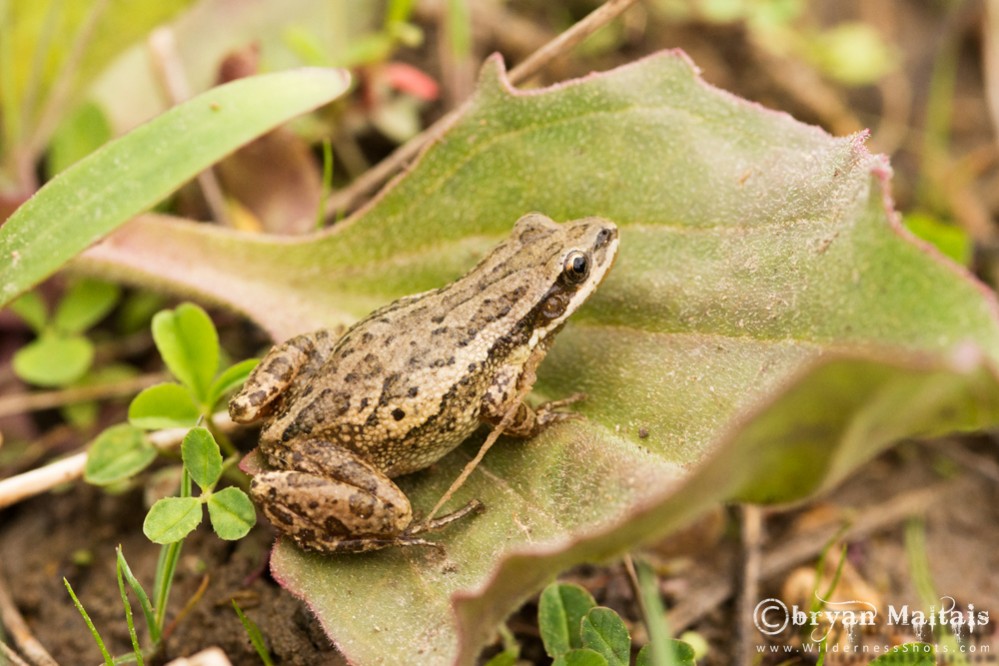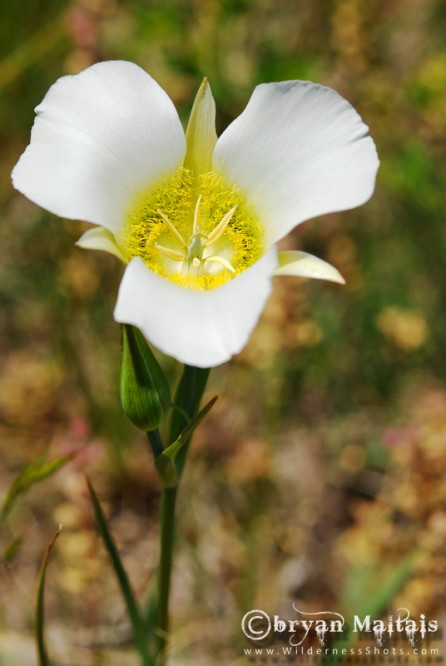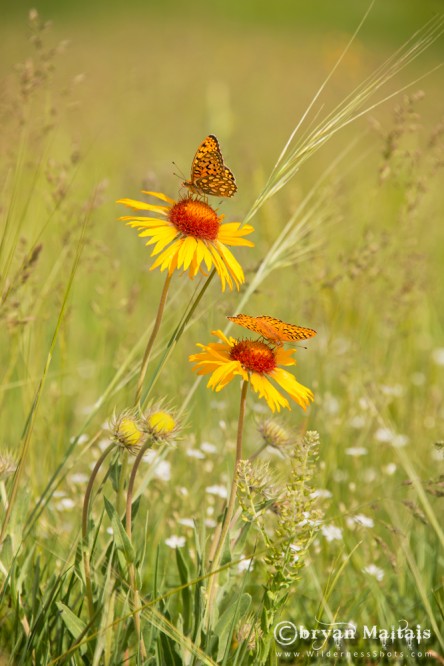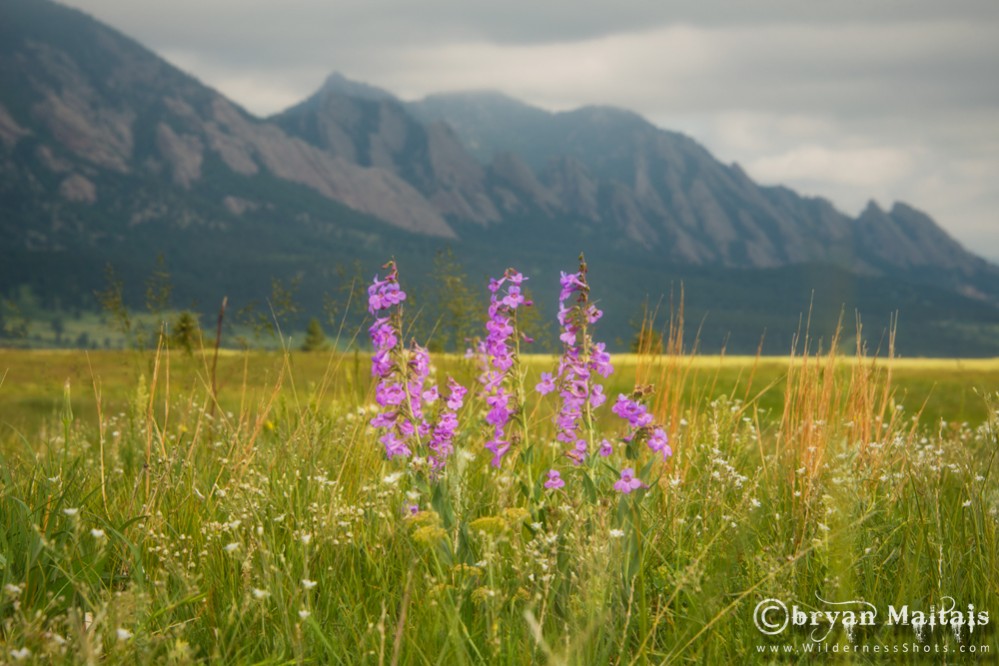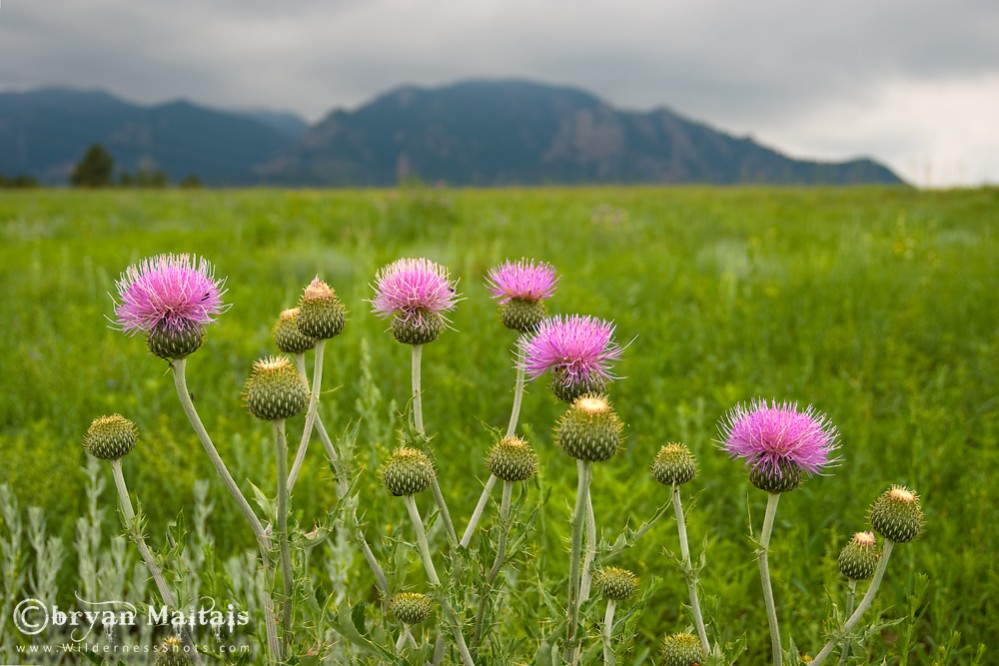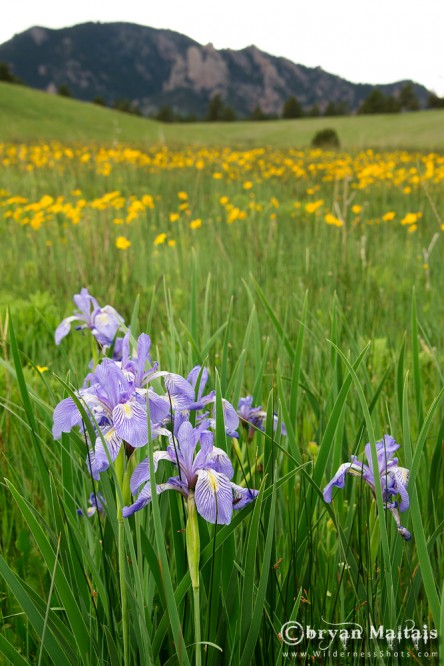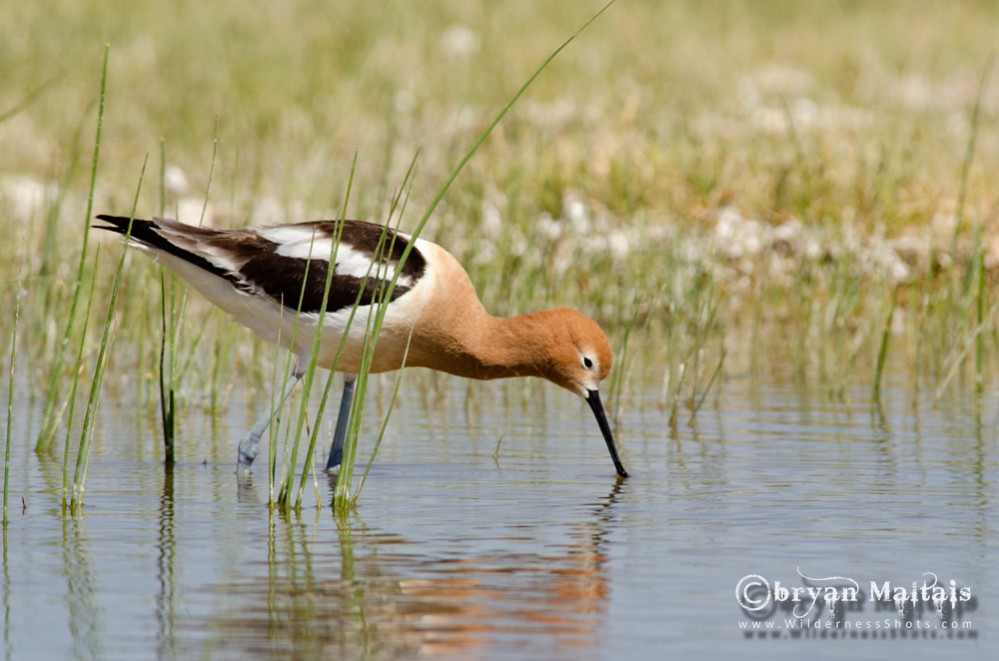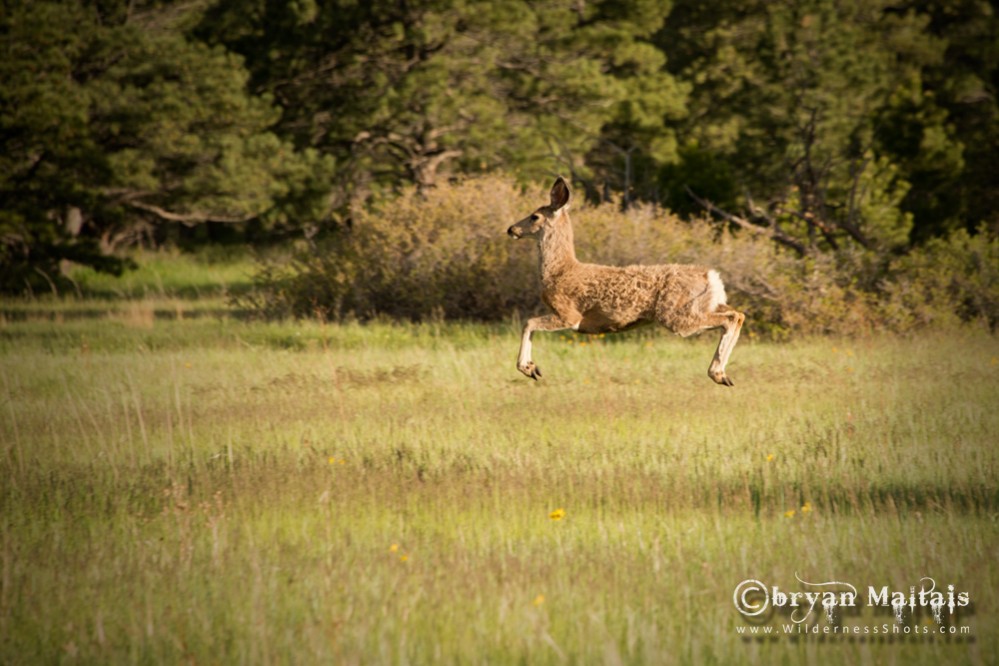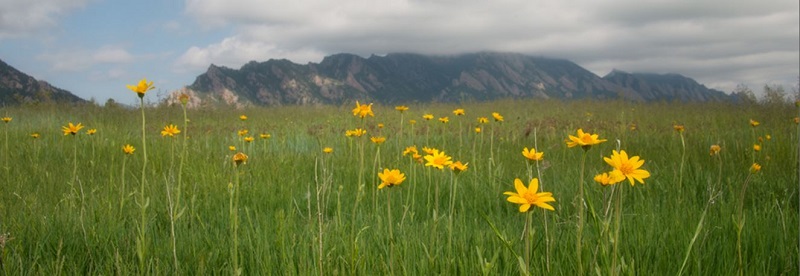
For nature photographers, one of Colorado’s best pleasures is that you get to experience wildflower season twice; once on the Front Range in May/June, and then again in mid July in the high mountains. While impressive wildflower shots with towering peaks in the background are standard in Crested Butte and the San Juan mountains, down at 5,000 ft, that’s a harder to come by. Enter the Boulder Flatirons; a distinguished mountain backdrop in the foothills, adorned with an almost inexplicable density of wildflowers.
There are many good Front Range wildflower spots, but none deliver like the Flatirons area. Among them are Roxborough State Park, Red Rocks, the foothills of Golden, and Lory State Park. I’ve gotten great photos at all of these- but what sets the Flatirons apart? Obviously, they form a big, stunning backdrop. But what you don’t see when peering at the Flatirons from afar is the expanse of land at their base that’s full of rolling terrain to explore. Particularly in springtime, it’s something of a hidden paradise. There are table mesas separated by valleys, filled with vast meadows and streams. The terrain undulates such that at sunrise and sunset, golden light creeps into the crevices of the land to create fingers of light and shade. Here you can easily forget the nearby urban bustle and get lost in this visual poetry.
Boulder is the Crested Butte of the Front Range for wildflowers. Nowhere in the lowlands have I seen such sprawls of single colors stretch down hillsides. Amazing diversity is created by the convergence of great plains and foothills flower species. However, habitat conditions along the Flatirons aren’t markedly different from other foothill areas that I mentioned, so it would probably take a botanist to explain the particular preponderance of wildflowers here.
Different wildflower species bloom at different times, and many bloom only for a few days before the flower shrivels and the seed pod begins to form. This implies that to inventory every flower that blooms here, you’ll need to visit frequently, starting in mid April until summer’s end. However, the best displays come between mid May to mid June, and vary with Spring precipitation and temperatures. Each visit will reveal different color combinations. For example, a visit in April yields the short blooming, Purple Pasque Flower, hidden in moist pockets. But you’d see no hint of the purple Lupines and yellow Arnica that will sprawl through the meadows come May and June. By July, the Summer heat sets in, peak color passes and the green meadows turn yellow. Yet still individual flowers continue to bloom all over.
Animals
The Flatirons aren’t just about wildflowers; you can observe many interesting and seldom seen animals too. In spring the Chorus Frogs serenade hikers from marshy fields. Savanna trees are alive with newly returned birds tending to chicks. This is a great place to see my favorite bird, the Western Tanager; so colorful that it bests the flashiest canary and looks to belong in a tropical forest. Ground nesting birds like Western Meadowlark, Killdeer and Vesper Sparrow hide small, camouflaged nests directly in the grass. Beneficial Bull Snakes are common, and you may even come across the seldom seen Western Rattlesnake if you’re lucky. I’ve encountered Mule Deer and Coyotes every time that I’ve been at the Flatirons during sunset. For macro photography, the grasses and flowers abound with countless species of grasshoppers, beetles and spiders. Common here is the large Hummingbird Moth, which moves and hovers just like its namesake, with a nectar-harvesting proboscis in place of bill and tongue.
I got hooked on the Flatirons a few years ago when I lived only 7 miles from them in Broomfield. There, I had the chance to visit often throughout the season. They never lost my attention because so many things changed between visits. In spring the atmosphere was so thick with things coming back to life that you could breathe it in. Often, enthralling dark blue clouds with rich shapes churned overhead, sprinkling a few drops that would make the chorus frogs, as well as migrant birds, sing with fervor. Everything was vibrant green, and the earth constantly pushed forth vegetation from the soil. In mid summer, bright sun and heat took over, and the soft soil became hard and cracked. In ponds, Western Painted Turtles basked on stones, and ornate grasshoppers dominated the grass.
Flatirons Photography Locations
Just saying the “Boulder Flatirons” is pretty general, so where specifically? Flatirons Vista Open Space, directly off Hwy 93 (Foothills Parkway), is my favorite. It has breathtaking views and a variety of habitats, including savannah, grassland, streams and ephemeral ponds. The trailhead begins far off from the Flatirons so you can see the full height of the foothills. Alternatively, drive down Eldorado Springs Dr. to find several great trailheads. Chautauqua Park is a more crowded option that begins right in Boulder and sits directly at the base of the Flatirons. Because you’re so close to them, there’s a dramatic view of the massive triangular rock slabs that earned the Flatirons their name, but you can’t see the full height of the foothills. Chautauqua Park begins as a loop through foothill forest, which joins more rugged trails in the Boulder Mountain Park.
Photography Technique
Glass and Zoom
Since my goal at the Flatirons is s to shoot flowers with mountains in the background, rather than frame-filling macro shots of the flowers themselves, I mostly use my 28-300 mm (on a FX full sensor Nikon D800). The DX sensor equivalent would be a 18-200 mm. This lens choice is dictated by the size of the foothills in the background. If you try a less powerful lens, the foothills will be too small. In Crested Butte for example, the mountains are so large and close up that I can use my my super wide 16-35mm to capture the breadth of the wildflower fields without loosing the impact of the mountains’ size. In Boulder however, there aren’t nearly such wide fields of flowers to fit into the frame, and the Flatirons aren’t as big or close. To enhance the impact of the Flatirons’ size, I’ll often back up from an individual bunch of flowers by about 7-10 feet, and zoom in. This exaggerates the size of the background foothills because the zoom magnifies things equally, not proportionally. The size of the foothills does not change to the human eye when one walks 7-10 feet closer, but when you zoom in 7-10 feet, all objects in the frame are magnified up to 4 times larger. I call this the “African Moon Effect”, from classic nature documentary scenes where a huge telephoto lens shows a grazing animal on the African savanna with a moon in the background so large that it looks like it’s about to crash into the earth.
Get on your belly!
The best view of a wildflower is to be at eye level with the bloom, looking straight into its stamen and stigma. This perspective is also necessary to capture mountains in the background along with the flower. The only excuse to be higher is if you’re shooting a whole meadow of wildflowers, or purposely shooting down into an up-facing bloom to capture its anatomy. Otherwise, a photo taken from a camera pointed down at a flower is obvious and looks amateurish.
Aperture
I’ve tried wide open f-stops like f/5.6 and wider to blur the background and isolate the flower, but for this style of shooting with mountains in the background, the most pleasing results have come from f/11 and f/16. At these apertures, the foothills are just sharp enough to appreciate, but still fuzzy enough to emphasize the bloom. At f/22 and narrower, distracting foreground grasses can come into focus too much. This is one area, however, that’s truly personal preference.
Light
It’s nice to capture every shot at sunrise and sunset, but in wildflower photography there’s a plain of flowers ahead of you to capture, and sunrise/sunset only lasts for a few minutes. That’s why I love overcast, cloudy days for wildflower shooting. Since the flowers are the focal point and not the mountains, dramatic light is less important. Clouds provide even, diffused light, which provides shadowless illumination into the flowers’ dark nooks and crannies. Clouds also vanquish the threat of harsh overhead and back lighting later in the day. Another option for supplemental lighting to consider is a reflector, though personally I’d rather enjoy the experience without lugging a virtual studio into the field.
Tripod and ISO
When landscape shooting, my camera is almost always locked down. When wildflower shooting, I’m only locked down when low light forces me to be. Because there’s so much hunting around for pretty flowers, crawling on my belly, and contorting to find the best angle, a tripod often doesn’t adjust as I need it to, so I hand-hold my camera instead. Admittedly, this is a luxury made possible in part by extremely effective vibration reduction technology in my lenses. It helps me achieve sharp hand-held photos at slower shutter speeds that would have been blurred with non image stabilized lenses.
To further ensure sharper images when shooting wildflowers, I’m willing to go up to ISO 400 to attain faster shutter speeds. Though I mostly use ISO 100 for landscapes, wildflower photos usually have less detail than landscape photos so I’ll tolerate the extra noise that comes with ISO 400. To allow for an even faster shutter speed you can go up to ISO 800 or 1600. Personally though, while OK for wildlife, the noise is too grainy at ISO 800 for my taste, even on my Nikon D800. But this is because I want to produce 60″ prints with no hint of grain, so if you don’t need to do this, using a high ISO can make your life easier.




